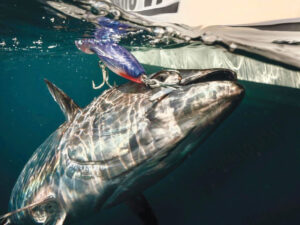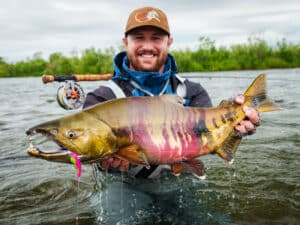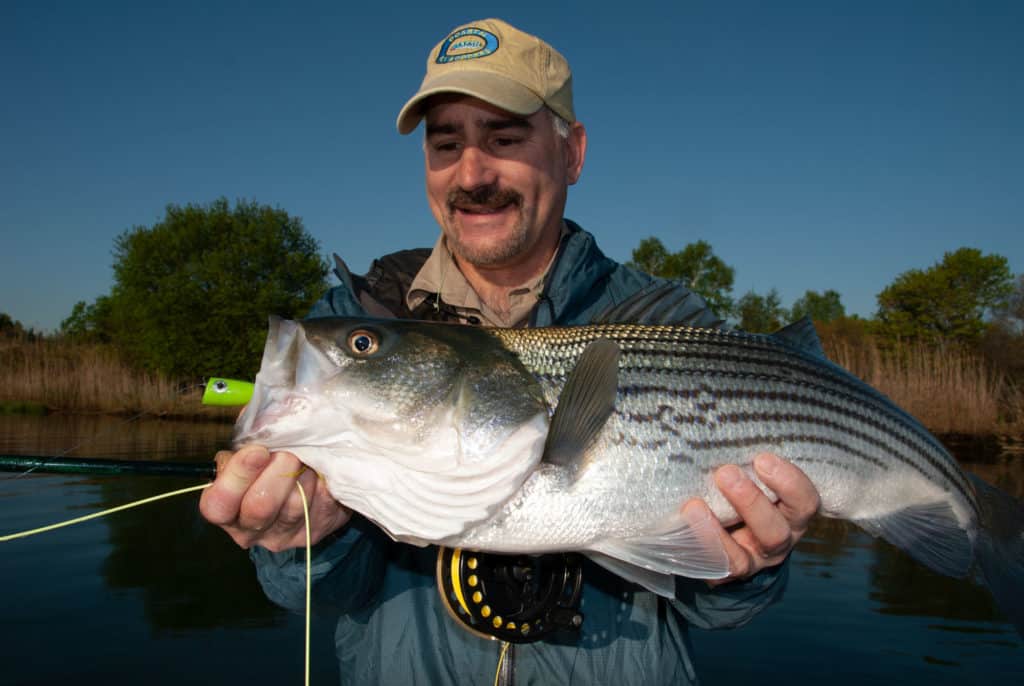
Birds screeching and diving, big predators ripping though schools of hapless baitfish. It’s high-intensity stuff. That’s why so many fly rodders dream about throwing flies at blitzing stripers. But in the Northeast, that happens mostly during the fall.
The spring? Well, that’s when we have to go poking into the bays and estuaries, and fish the skinny stuff. Pushing up shallow mud flats, and throwing large, topwater flies at big, often skittish fish. One strip, a boil, then another, and the water violently explodes as a striper crushes your offering. Still, a pretty intense experience.
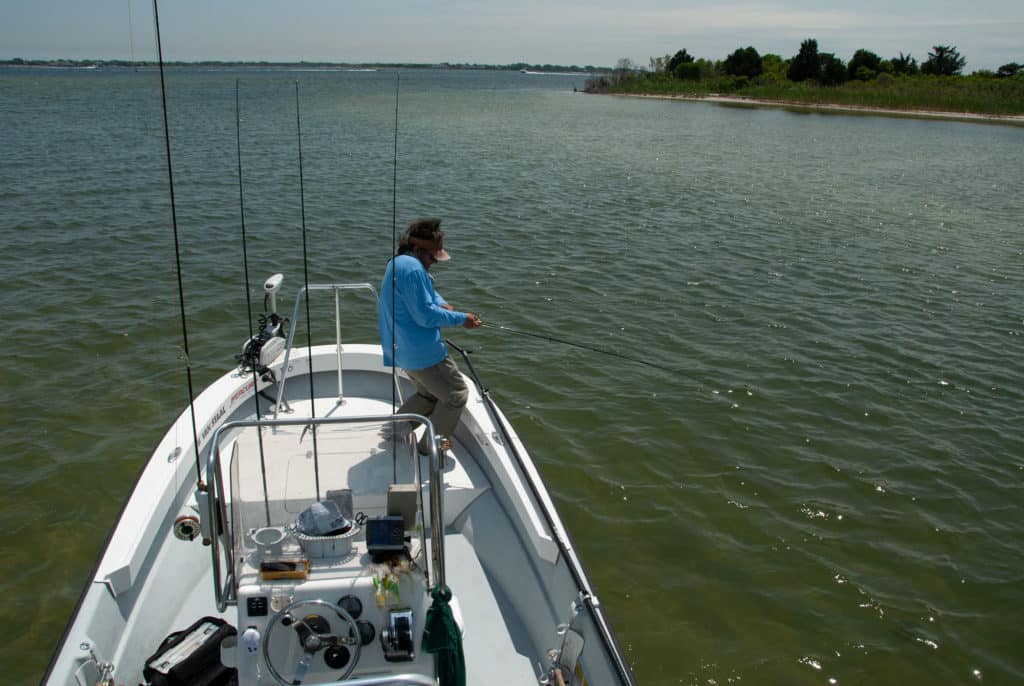
Showers, Flowers and Peanuts
April can be good but, for most areas along the Northeast coast, it is a precarious month. “The fishing depends largely on the weather,” notes New York Fly-fishing guide, Capt. Jesse Wynn. “If we get high sun and warm weather, it’s game-on. But if it’s cold and overcast all month, well…”
Those high-sun days bake the shallow mud flats. If that happens, we frequently have some epic grass shrimp hatches that draw all sorts of stripers to the flats.
May, however, brings with it better, more consistent weather and fishing opportunities. Yes, we may get good grass shrimp hatches, but it’s the juvenile menhaden (AKA peanut bunkers) that have produced extraordinary fly fishing the last several years. “We rarely got them this early, until a few years ago,” says Wynn. “But now, we’ve got them in the creeks, mud flats etc. in May.”
While there are certainly other bait sources, like silversides, small crabs and more, it’s the peanuts Not only do peanuts seem to make stripers feed with reckless abandon, they also seem to pull fish out of the deep and up into the shallow water, and that is where the fly stuff shines.

Striper Marsh
The striper coast is lined with such estuarian and/or salt marsh. If you want to catch stripers on a fly early in the season, it’s there you should be looking. Find those mud flats. The sun will warm those flats before anything else, and that will bring in the bait and the predators.
“We try and focus on flats adjacent to creeks, or openings in the marsh” says Wynn. “On an outgoing tide, bait tends to wash out and stripers are there to take advantage”.
“Those mud flats adjacent to drop-offs are money” say fly-fishing Capt. Danny Reich. “Work your fly across that flat and almost as soon as it gets to the drop off KABOOM!”.
I like to focus on the sod banks, throwing flies right up against them. Keep in mind that these mud flats are very accessible to waders also.

Stay on Top
Don’t bother to bring a sinking line. The spring is all about floating lines and big noisy topwater flies. I like poppers. For one, there is nothing cooler than seeing a striper follow a popper and smash it. We tie big conehead foam-poppers with a few modifications: We put the eye of the hook though the bottom, instead of the middle, and bore out a middle hole for a glass rattle. This makes for a very noisy fly that also pushes a lot of water.
Gartside Gurglers have their benefits too. They don’t land on the surface as hard, so are less likely to spook fish on the cast. Deer-hair sliders have their place also, particularly when you encounter less aggressive fish that are being finicky and rather difficult.
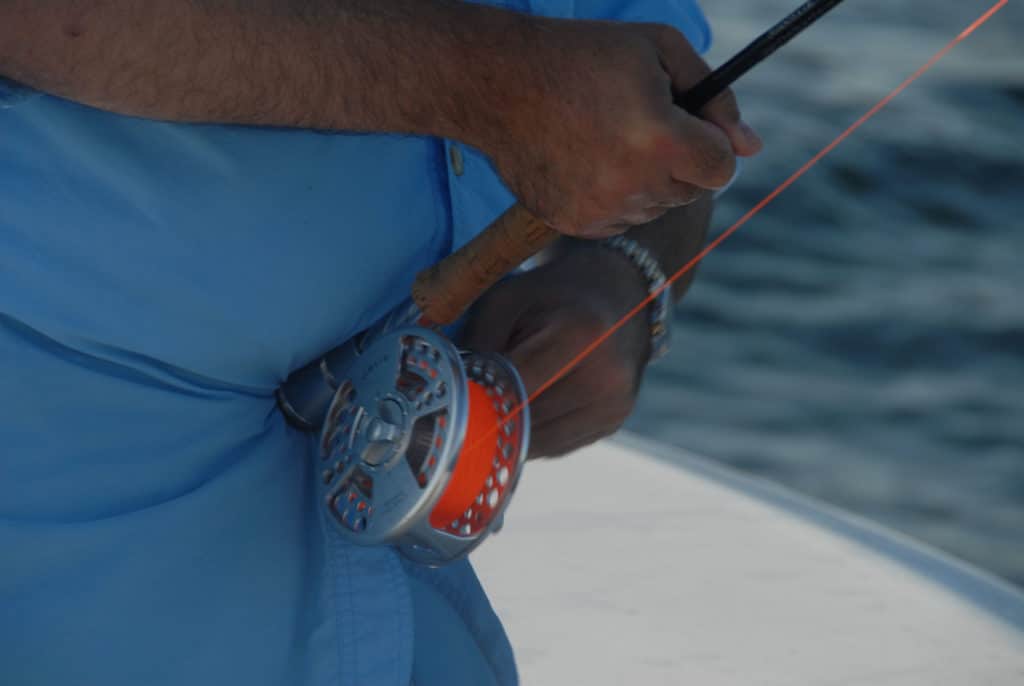
You can use streamer flies like Clousers and Deceivers, and catch fish. But in the shallow stuff, why wouldn’t you want to use a topwater fly and enjoy the surface fireworks?
The workhorse of the fly rod quiver is a 9-weight. Although 8- and even 7-weights are fun to use, especially when most fish are in that 24-inch range, they aren’t great choices for throwing poppers and other big topwater patterns. A 9-weight, however, can turn those heavy or bulky flies over considerably better, especially if you use short leaders. I find that a 5-foot leader is really all you need.
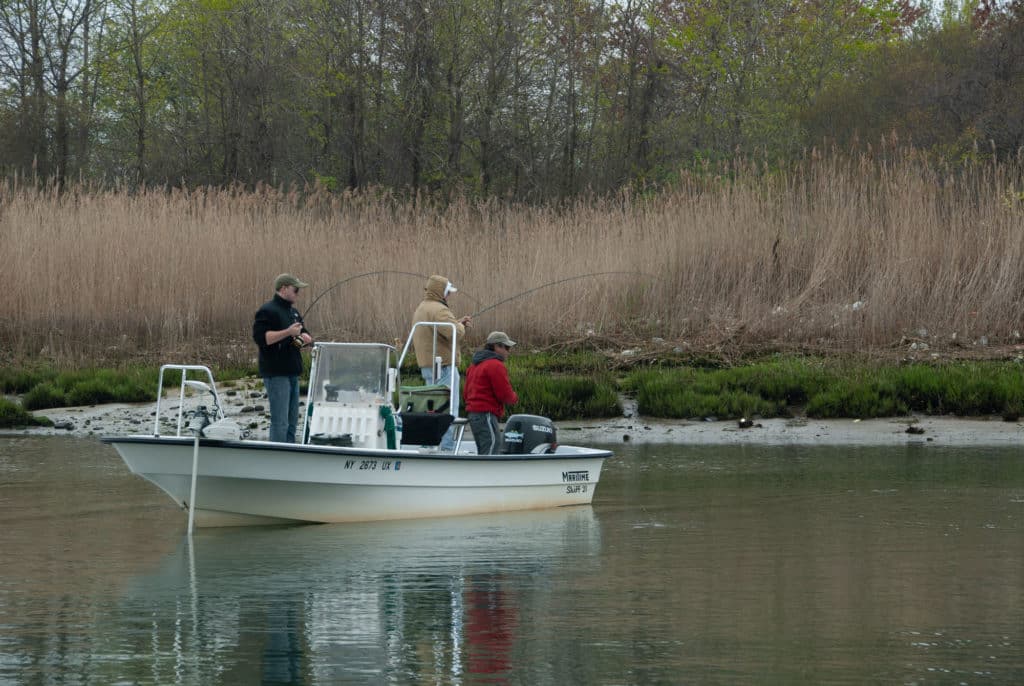
Pre-Spawn Fish
In April, a good bite of large pre-spawn stripers does happen in certain areas, like Raritan Bay (between New Jersey and Staten Island), for instance, et there are plenty of other hotspots. Occasionally stripers will come up to the surface, and embark on exciting blitz-type conditions, with large fish feeding on 8- to 9-inch herring or menhaden. And yes, you can catch some real pigs on a fly when this happens. But, mostly it’s a deep-down fishery that requires you to lob a sinking line and let it drift out, before striping.
The fish then are all staging to spawn. In the Raritan Bay case, the stripers spawn up the Hudson River. Do we want to harass them and risk they will survive catch-and-release before the spawners make their pilgrimage to reproduce? You be the judge.

The spring is prime time along the striper coast. Not only do fly anglers get to shake off those cobwebs, but we also have the opportunity to get in on some of the best and most accessible action of the year, particularly on the mud flats. So prep that gear, and get ready to go track down those spring backwater stripers.

